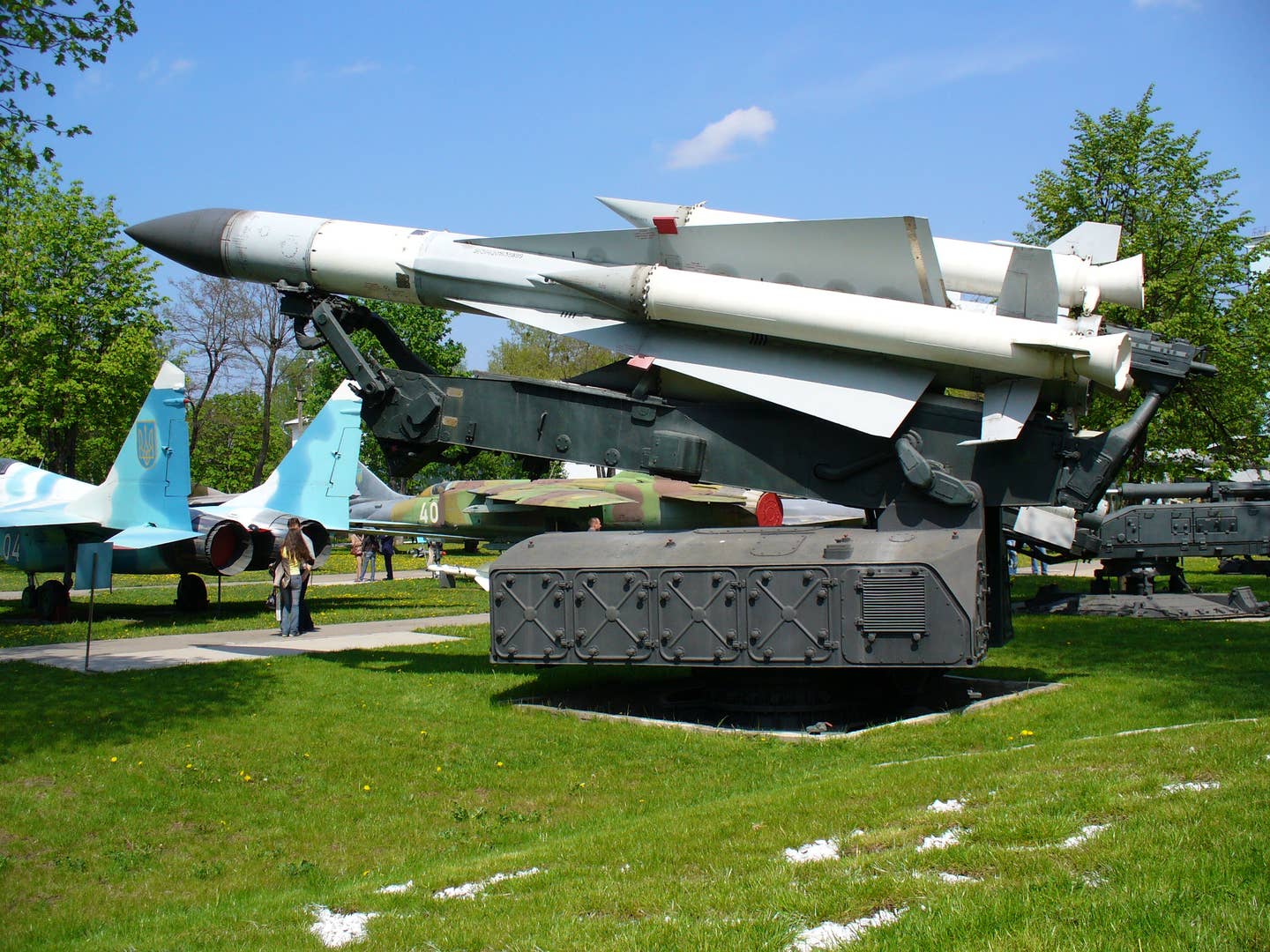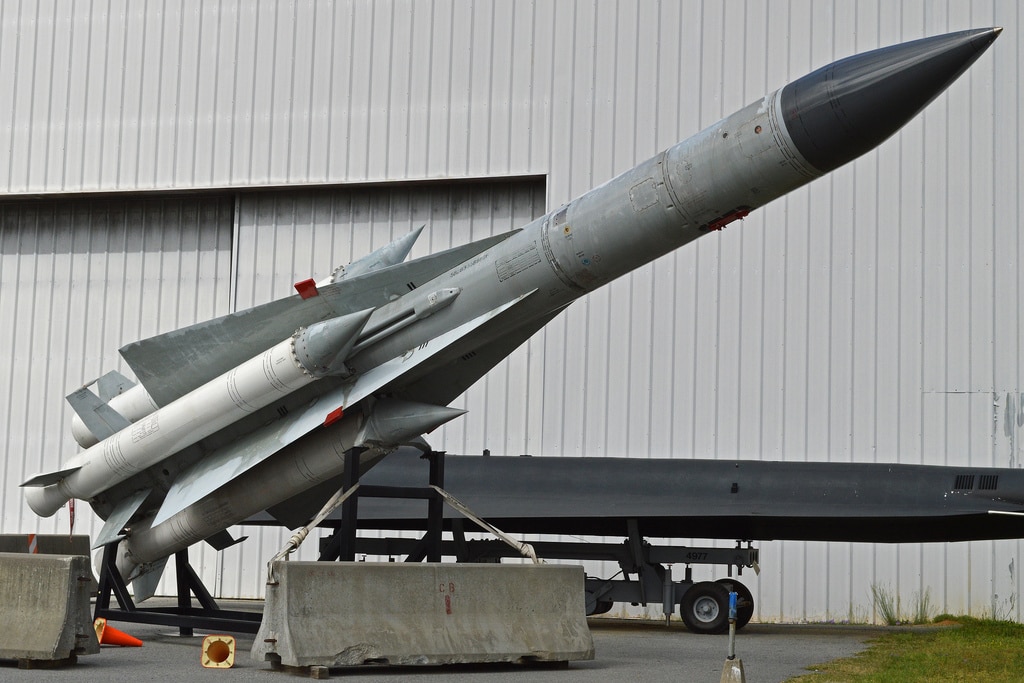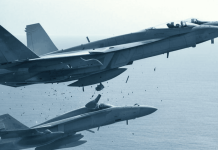The Russian Ministry of Defense recently alleged that the Ukrainian Armed Forces (AFU) attempted to target Russian territory using S-200 missiles on July 9. However, the assault was successfully repelled by the Russian forces.
MUST READ: Once Leading China/Pak JF-17 Program, India Must Get It’s Fighter Aircraft Production Right To Zoom Ahead
The Ministry stated that Kyiv made an unsuccessful attempt to strike targets in the Crimea, Kaluga, and Rostov regions. The assault was conducted using S-200 anti-aircraft missiles that were repurposed into a strike configuration, the Russian MoD added.
Viktor Afzalov, First Deputy Commander-in-Chief of the Russian Aerospace Forces, claimed that a combined effort of air defense systems and electronic warfare systems resulted in the destruction of four ballistic targets.
Specifically, two missiles were intercepted by air defense systems, while electronic warfare systems effectively neutralized the other two. No casualties have been reported in relation to the incident.
Moscow stated that the targets were successfully repelled without causing any damage on the ground.

However, local surveillance cameras recorded the arrival of the Ukrainian rocket and indicated that the Russian air defense systems were unsuccessful in intercepting at least one missile.
Meanwhile, Afzalov also asserted that one of the S-200 missiles fired by Kyiv on Sunday, July 9, was targeted toward the Crimean Bridge.
Valery Gerasimov, Chief of the Russian Armed Forces General Staff, was instructed to identify storage locations for S-200 missiles belonging to the Armed Forces of Ukraine and devise plans for pre-emptive strikes to inflict damage on these sites.
The footage was promptly analyzed, and most analysts also agreed that the Ukrainians utilized modified S-200 rockets that operate on a ballistic trajectory. It is due to this ballistic nature that these rockets can reportedly achieve a range of up to 400 km.
The alleged assault occurred just a day after a high-ranking Ukrainian defense official commemorated 500 days of conflict on July 9, acknowledging their involvement in an attack last year that caused significant damage to Russia’s bridge connecting to the occupied Crimea Peninsula.
In a Telegram post, Hanna Maliar, the deputy defense minister of Ukraine, stated that the Kerch Strait Bridge, inaugurated four years after Russia’s annexation of Crimea in 2014, was intentionally targeted to disrupt Moscow’s supply routes.
Following the incident, Russian authorities have taken necessary measures to ensure the protection and safety of the bridge. Air defense systems have been deployed to safeguard the crossing and prevent potential threats.
S-200 Air Defense System
The S-200 (NATO reporting name: SA-5 Gammon) is a medium to high-altitude surface-to-air missiles (SAM) defense system presently operational in a minimum of 12 countries.
Soviet engineers developed this weapon system in the 1950s to counter the US B-58 supersonic bomber, U2 spy plane, and various other reconnaissance aircraft.
Following its initial deployment in 1966, the S-200 underwent several upgrades to enhance its range and accuracy. In 1967, the S-200 A “Angara” model was introduced, equipped with the 5V21 missile that featured advanced technology for its time, including a continuous wave (CW) semi-active homing seeker radar for precise terminal guidance.
Subsequently, the S-200V “Vega,” S-200M “Vega M,” and S-200VE “Vega Export” systems were introduced between 1970 and 1972. These systems utilized the 5V28 missile, capable of reaching 200-250 km distances.
The S-200VE, similar to the S-200V, was sold with a high explosive warhead but lacked nuclear capability. The S-200D “Dubna,” which became operational in 1975, was a nuclear-capable variant equipped with an improved 5V28V rocket boasting a range of 300 km.

During its prime in 1985, the S-200V system was extensively deployed across more than 130 launch sites across the Soviet Union. This deployment included a total of 338 batteries, amounting to approximately 2030 launchers.
Before the invasion of Ukraine by Russia, Ukraine had four operational S-200 batteries, which consisted of around 24 launchers. Additionally, there were twelve inactive sites in Ukraine.
Some of these sites are believed to be legacy systems that came under Ukrainian control after the dissolution of the Soviet Union. However, reports have suggested that Ukraine may have acquired an undisclosed number of S-200V launchers from Russia in 2010.
On October 4, 2001, the Ukrainian S-200 weapon system gained significant attention due to a tragic incident. During that time, the Ukrainian military unintentionally shot down Siberia Airlines Flight 1812, traveling from Tel Aviv to Novosibirsk.
During an air defense exercise near the Crimean coast in the Black Sea, two anti-aircraft missiles were launched, one from an S-200 and another from an S-300 system, targeting a drone.
The S-300 missile successfully intercepted the drone as intended. However, the S-200 missile veered off course and flew an additional 240 km, ultimately hitting a Russian Tu-154 commercial airliner.
The devastating impact occurred when the plane was flying 35,000 feet above the Black Sea, resulting in the tragic loss of all 78 passengers and crew members aboard the aircraft.
Despite Ukrainian military officials vehemently denying their responsibility for the incident, the Ukrainian Defense Minister at the time, Oleksandr Kuzmuk, promptly offered his resignation following the tragedy. However, his resignation was ultimately rejected.
- Contact the author at ashishmichel(at)gmail.com
- Follow EurAsian Times on Google News




